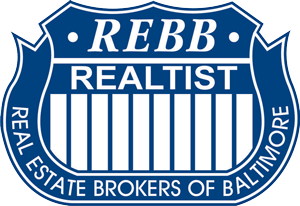REBB History
The Real Estate Brokers of Baltimore, Inc. – Then and Now As recently as seventy years ago, Black families across America had little choice as to where they would live and raise their children because they were restricted by geographical boundaries and limited by financial situations.
Consequently, a group of minority businessman and women joined together by a common goal formed an organization called the National Association of Real Estate Brokers in July 1947. They encouraged each other to go to their respective cities and form local organizations and to encourage the practice of discriminatory housing.
Spearheaded by Daniel Spaulding, then a young entrepreneur to be, met with other pioneers in Baltimore and formed the Real Estate Brokers of Baltimore in 1948. The first meeting was held at 1744 W. North Avenue in Baltimore City in the office of businesswoman Philathea Hall. Mr. Spaulding was elected President. Mr. D. Arnett Frisby was Vice President. Philathea Hall was Secretary, George Carroll, one of Baltimore’s first minority appraisers, was treasurer, and Linwood Koger was the group’s attorney who drafted the institution’s by-laws.
The climate for Black mobility was bleak. Restrictions placed on Blacks kept them no further west than Fulton Avenue, no further north than West North Avenue, no further east than Madison Avenue and bounded on the southern end of the city by Franklin Street. The prevailing rule by area lenders was “no family can receive mortgage loans in any neighborhood unless there is at least one Black family on the block.” How then was any African American to go beyond the boundaries unless someone got a chance to make the first step? The answers came after the brokers met. Get a few prominent businessmen to purchase properties through a silent majority contributor and resell theses properties to Black families.
Through his cousin, C.C. Spaulding of North Carolina Mutual Insurance Company in Durham, North Carolina, Mr. Spaulding was named a mortgage loan correspondent for the State of Maryland. This allowed him to grant mortgages to Black families without the pain and injustices of Baltimore lenders. Ten dollars down for GI’s with homes ranging from $8,000 for inside groups and $8,500 for end of groups was typical of the 1950’s.
Real Estate contracts came from the downtown business supply stores and as best as anyone could determine, Lawyers Title Company did real estate settlements for minorities. They became the first major affiliate of the Realtists.
Unscrupulous business practices by a group known as the “Forty Thieves” forced the Realists to spearhead the land installment contracts. Court action pursued by Realtist Crockett brought a lifting of sign ban restrictions.
A battle was won in the 60’s over the use of the acronym NAREB when the majority trade association, then known as the National Association of Real Estate Board, competed for the NAREB initials. Realtors became NAR and Realtists remained NAREB.
In 1994, the Realtists filed a lawsuit against the Greater Baltimore Board of Realtors and MidAtlantic Real Estate Information Technologies, Inc. (MERIT). The action sought after declaratory injunction and equitable relief, compensatory , treble and punitive damages, attorney’s fees, cost and other relief for the deliberate and calculated scheme and conspiracy of defendants to unlawfully and unreasonably restrain competition and monopolize the manner in which real estate is sold in the Baltimore Metropolitan and surrounding areas in violation of the Sherman Anti-Trust Act. ISU.s.C.SSlet sep. The suit centered around the basic requirement of having to be a member of the Realtors to have access to the MLS (MERIT) listing service. The Real Estate Brokers of Baltimore prevailed. The order of judgement against The GBBR was, MERIT shall not require as a condition of participation in its multiples listing service that real estate agents belong to a local Realtor Board.
The homeownership rate in the year of the 1968 Fair Housing Bill was 41.8 percent, fifty years later in 2019 it is 41.9 percent. It hasn’t been an easy task for the Realtists and the minority community is serves. Discrimination in housing, redlining in insurance, and financing restrictions still exist today. The task is never fruitless.
Contributed by Patricia Davis, Thea Wainwright, H. Bernie Jackson And some memoirs of Daniel Spaulding
